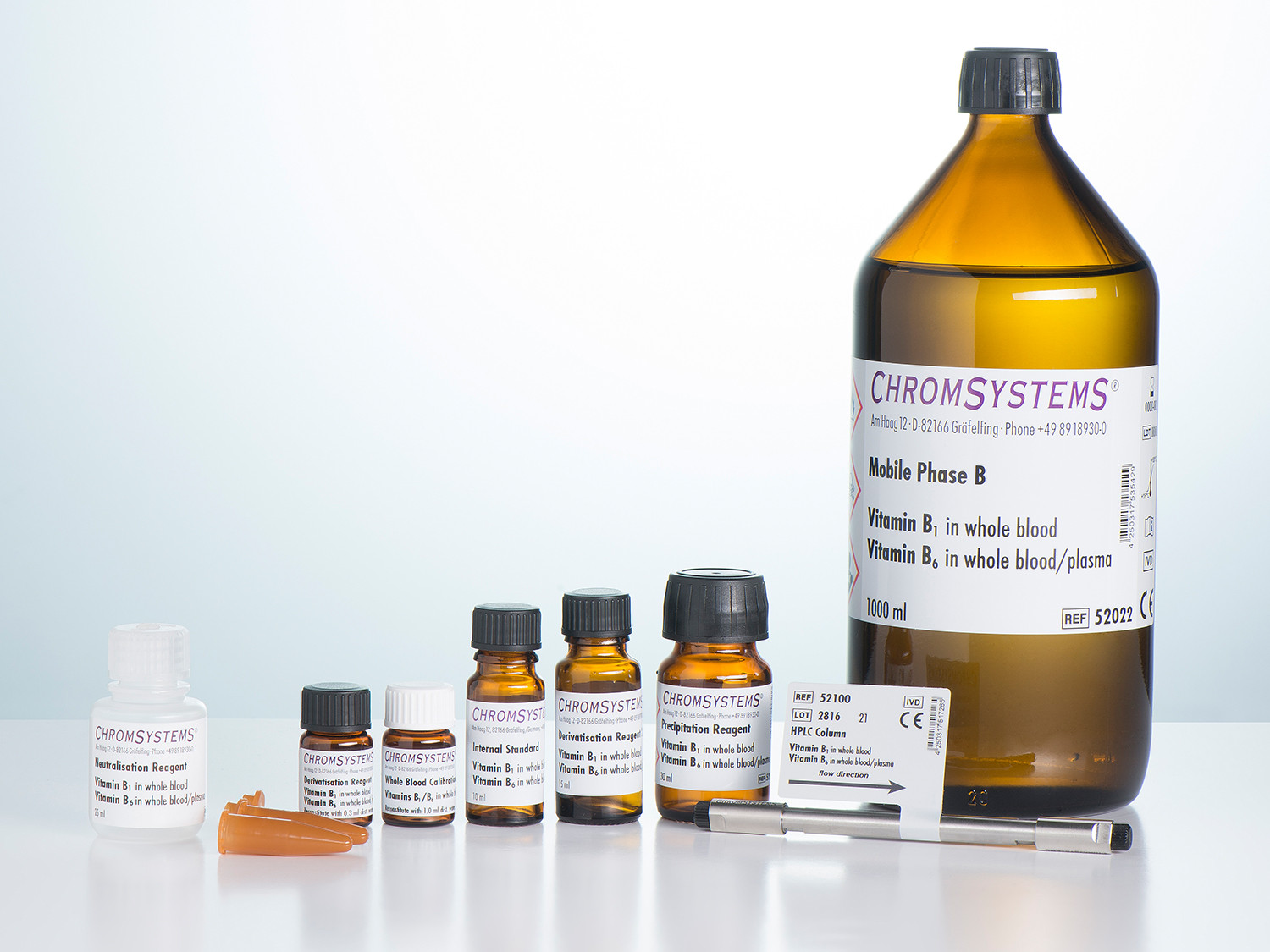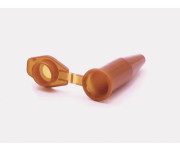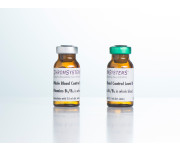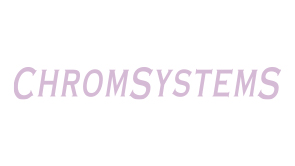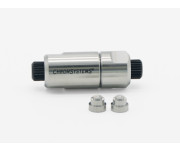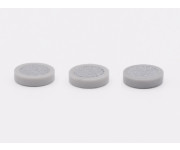Vitamin B1 in Whole Blood and Vitamin B6 in Whole Blood/Plasma - HPLC
Each parameter safeguarded by a specific internal standard
No post-column derivatisation required
One sample preparation and one run for both parameters
CE-IVD validated product ready for IVDR within timeframes and transition periods specified by the IVDR 2017/746
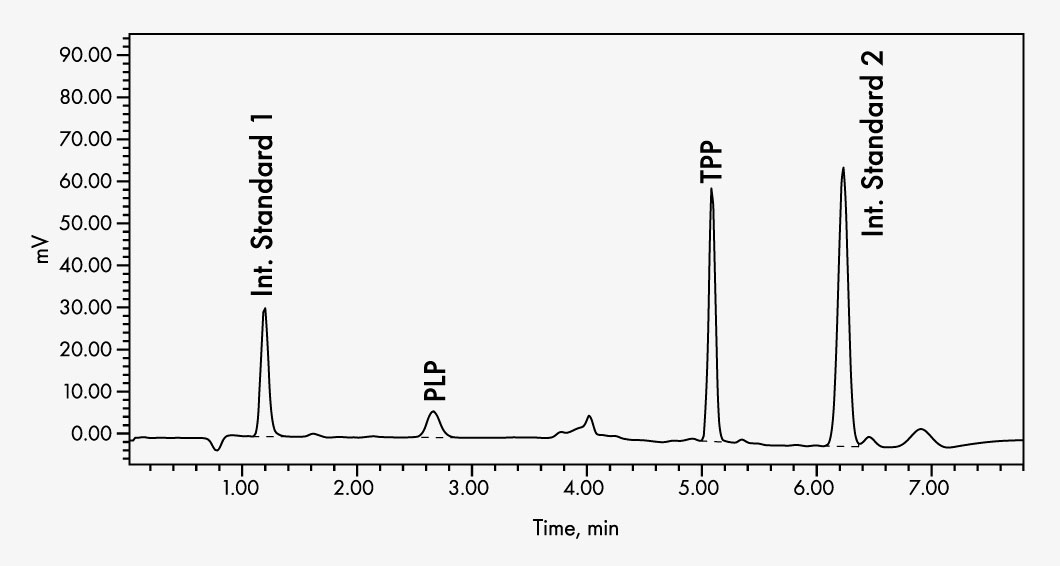

Vitamin B1 (TPP, thiamine pyrophosphate)
Vitamin B6 (PLP, pyridoxal 5’-phosphate)
Clinical relevance
Vitamin B1 (thiamine) plays an important role in deriving energy from carbohydrates and fats. The active form is thiamine pyrophosphate (TPP), a coenzyme for some enzymatic reactions in carbohydrate metabolism and for pyruvate decarboxylase. TPP is also significantly involved in the oxidative degradation of glucose. The determination of the TPP concentration is more significant than measurements of total thiamine, as by this method only the physiologically active form is taken into account.
Vitamin B6 comprises pyridoxine, pyridoxamine and pyridoxal, as well as their phosphate derivatives. It is ingested with food and transferred via several enzymatic conversions into its active form, pyridoxal-5’-phosphate (PLP). PLP is involved in nearly one hundred different enzymatic reactions, among other things, as co-factor in amino acid metabolism, and in the formation of haemoglobin or neurotransmitters in the brain.
Product advantages
- Specific internal standard for each parameter
- No post-column derivatisation required
- One sample preparation and one run for both parameters
This Chromsystems kit facilitates the combined analysis of vitamin B1 in whole blood and vitamin B6 in whole blood or plasma. The sample preparation can be processed from different matrices, so that both whole blood samples and plasma samples can easily be measured in the same run. Vitamin molecules are already derivatised during sample preparation, which renders the common post-column derivatisation unnecessary. The separation takes place with a binary gradient. The internal standard for each of the two parameters and special quality controls ensure precise and reliable quantification.
This method is also available with simplified sample preparation in pre-mixed tubes.
There is also a method using UHPLC as well as automated sample preparation for HPLC and UHPLC methods available for laboratories with a higher sample throughput.
| Method of Analysis | HPLC |
|---|---|
| Number of Tests | 100 |
| Please note | The freely available information on this website, in particular on the sample preparation, are not sufficient to work with our products. Please read instructions and warning notices on products and/or instruction manuals. |
| Lower Limit of Quantitation | TPP 2.0 μg/l (whole blood) |
| Upper Limit of Quantification | PLP 500 μg/l |
| Intraassay | CV ≤ 2.3 % |
| Interassay | CV ≤ 5.2 % |
| Recovery | ≤ 102 % |
| Specimen | Whole Blood/Plasma |
| Sample Preparation |
|
| Run Time | 7–9 min |
| Injection Volume | 25–50 μl |
| Flow Rate | 1.5–2.3 ml/min |
| Column Temperature | ambient (~25°C) |
| Gradient | binary |
| Wavelength | Start EX 320 nm, EM 415 nm, after approx. 3.8 min switch to EX 367 nm, EM 435 nm |
| Additional Info | Every common HPLC system with binary pump and programmable fluorescence detector is suitable. |
| Parameters | Vitamin B1 (TPP, thiamine pyrophosphate), Vitamin B6 (PLP, pyridoxal 5’-phosphate) |
-
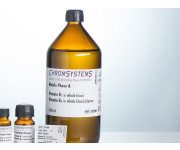 Mobile Phase AOrder no.: 52001
Mobile Phase AOrder no.: 52001Vitamin B1 in Whole Blood and Vitamin B6 in Whole Blood/Plasma - HPLC
-
 Mobile Phase BOrder no.: 52022
Mobile Phase BOrder no.: 52022Vitamin B1 in Whole Blood and Vitamin B6 in Whole Blood/Plasma - HPLC
-
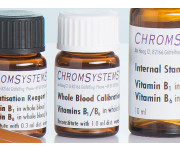 Vitamins B1/B6 Whole Blood Calibration StandardOrder no.: 52003
Vitamins B1/B6 Whole Blood Calibration StandardOrder no.: 52003Vitamin B1 in Whole Blood and Vitamin B6 in Whole Blood/Plasma - HPLC/UHPLC
-
 Internal StandardOrder no.: 52044
Internal StandardOrder no.: 52044Vitamin B1 in Whole Blood and Vitamin B6 in Whole Blood/Plasma - HPLC/UHPLC
-
 Precipitation ReagentOrder no.: 52005
Precipitation ReagentOrder no.: 52005Vitamin B1 in Whole Blood and Vitamin B6 in Whole Blood/Plasma - HPLC/UHPLC
-
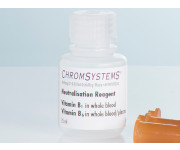 Neutralisation ReagentOrder no.: 52006
Neutralisation ReagentOrder no.: 52006Vitamin B1 in Whole Blood and Vitamin B6 in Whole Blood/Plasma - HPLC
-
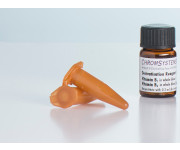 Derivatisation Reagent 1 (lyoph.)Order no.: 52007Vitamin B1 in Whole Blood and Vitamin B6 in Whole Blood/Plasma - HPLC/UHPLC
Derivatisation Reagent 1 (lyoph.)Order no.: 52007Vitamin B1 in Whole Blood and Vitamin B6 in Whole Blood/Plasma - HPLC/UHPLC -
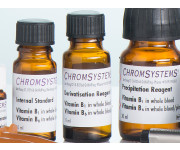 Derivatisation Reagent 2Order no.: 52008
Derivatisation Reagent 2Order no.: 52008Vitamin B1 in Whole Blood and Vitamin B6 in Whole Blood/Plasma - HPLC/UHPLC
-
 HPLC Column Vitamin B1 in Whole Blood and Vitamin B6 in Whole Blood/PlasmaOrder no.: 52100
HPLC Column Vitamin B1 in Whole Blood and Vitamin B6 in Whole Blood/PlasmaOrder no.: 52100Vitamin B1 in Whole Blood and Vitamin B6 in Whole Blood/Plasma - HPLC
-
 Vitamins B1/B6 Whole Blood Calibration StandardOrder no.: 52003
Vitamins B1/B6 Whole Blood Calibration StandardOrder no.: 52003Vitamin B1 in Whole Blood and Vitamin B6 in Whole Blood/Plasma - HPLC/UHPLC
-
 HPLC Column Vitamin B1 in Whole Blood and Vitamin B6 in Whole Blood/PlasmaOrder no.: 52100
HPLC Column Vitamin B1 in Whole Blood and Vitamin B6 in Whole Blood/PlasmaOrder no.: 52100Vitamin B1 in Whole Blood and Vitamin B6 in Whole Blood/Plasma - HPLC


Vitamin B1 (TPP, thiamine pyrophosphate)
Vitamin B6 (PLP, pyridoxal 5’-phosphate)
Clinical relevance
Vitamin B1 (thiamine) plays an important role in deriving energy from carbohydrates and fats. The active form is thiamine pyrophosphate (TPP), a coenzyme for some enzymatic reactions in carbohydrate metabolism and for pyruvate decarboxylase. TPP is also significantly involved in the oxidative degradation of glucose. The determination of the TPP concentration is more significant than measurements of total thiamine, as by this method only the physiologically active form is taken into account.
Vitamin B6 comprises pyridoxine, pyridoxamine and pyridoxal, as well as their phosphate derivatives. It is ingested with food and transferred via several enzymatic conversions into its active form, pyridoxal-5’-phosphate (PLP). PLP is involved in nearly one hundred different enzymatic reactions, among other things, as co-factor in amino acid metabolism, and in the formation of haemoglobin or neurotransmitters in the brain.
Product advantages
- Specific internal standard for each parameter
- No post-column derivatisation required
- One sample preparation and one run for both parameters
This Chromsystems kit facilitates the combined analysis of vitamin B1 in whole blood and vitamin B6 in whole blood or plasma. The sample preparation can be processed from different matrices, so that both whole blood samples and plasma samples can easily be measured in the same run. Vitamin molecules are already derivatised during sample preparation, which renders the common post-column derivatisation unnecessary. The separation takes place with a binary gradient. The internal standard for each of the two parameters and special quality controls ensure precise and reliable quantification.
This method is also available with simplified sample preparation in pre-mixed tubes.
There is also a method using UHPLC as well as automated sample preparation for HPLC and UHPLC methods available for laboratories with a higher sample throughput.
| Method of Analysis | HPLC |
|---|---|
| Number of Tests | 100 |
| Please note | The freely available information on this website, in particular on the sample preparation, are not sufficient to work with our products. Please read instructions and warning notices on products and/or instruction manuals. |
| Lower Limit of Quantitation | TPP 2.0 μg/l (whole blood) |
| Upper Limit of Quantification | PLP 500 μg/l |
| Intraassay | CV ≤ 2.3 % |
| Interassay | CV ≤ 5.2 % |
| Recovery | ≤ 102 % |
| Specimen | Whole Blood/Plasma |
| Sample Preparation |
|
| Run Time | 7–9 min |
| Injection Volume | 25–50 μl |
| Flow Rate | 1.5–2.3 ml/min |
| Column Temperature | ambient (~25°C) |
| Gradient | binary |
| Wavelength | Start EX 320 nm, EM 415 nm, after approx. 3.8 min switch to EX 367 nm, EM 435 nm |
| Additional Info | Every common HPLC system with binary pump and programmable fluorescence detector is suitable. |
| Parameters | Vitamin B1 (TPP, thiamine pyrophosphate), Vitamin B6 (PLP, pyridoxal 5’-phosphate) |
-
 Mobile Phase AOrder no.: 52001
Mobile Phase AOrder no.: 52001Vitamin B1 in Whole Blood and Vitamin B6 in Whole Blood/Plasma - HPLC
-
 Mobile Phase BOrder no.: 52022
Mobile Phase BOrder no.: 52022Vitamin B1 in Whole Blood and Vitamin B6 in Whole Blood/Plasma - HPLC
-
 Vitamins B1/B6 Whole Blood Calibration StandardOrder no.: 52003
Vitamins B1/B6 Whole Blood Calibration StandardOrder no.: 52003Vitamin B1 in Whole Blood and Vitamin B6 in Whole Blood/Plasma - HPLC/UHPLC
-
 Internal StandardOrder no.: 52044
Internal StandardOrder no.: 52044Vitamin B1 in Whole Blood and Vitamin B6 in Whole Blood/Plasma - HPLC/UHPLC
-
 Precipitation ReagentOrder no.: 52005
Precipitation ReagentOrder no.: 52005Vitamin B1 in Whole Blood and Vitamin B6 in Whole Blood/Plasma - HPLC/UHPLC
-
 Neutralisation ReagentOrder no.: 52006
Neutralisation ReagentOrder no.: 52006Vitamin B1 in Whole Blood and Vitamin B6 in Whole Blood/Plasma - HPLC
-
 Derivatisation Reagent 1 (lyoph.)Order no.: 52007Vitamin B1 in Whole Blood and Vitamin B6 in Whole Blood/Plasma - HPLC/UHPLC
Derivatisation Reagent 1 (lyoph.)Order no.: 52007Vitamin B1 in Whole Blood and Vitamin B6 in Whole Blood/Plasma - HPLC/UHPLC -
 Derivatisation Reagent 2Order no.: 52008
Derivatisation Reagent 2Order no.: 52008Vitamin B1 in Whole Blood and Vitamin B6 in Whole Blood/Plasma - HPLC/UHPLC
-
 HPLC Column Vitamin B1 in Whole Blood and Vitamin B6 in Whole Blood/PlasmaOrder no.: 52100
HPLC Column Vitamin B1 in Whole Blood and Vitamin B6 in Whole Blood/PlasmaOrder no.: 52100Vitamin B1 in Whole Blood and Vitamin B6 in Whole Blood/Plasma - HPLC
-
 Vitamins B1/B6 Whole Blood Calibration StandardOrder no.: 52003
Vitamins B1/B6 Whole Blood Calibration StandardOrder no.: 52003Vitamin B1 in Whole Blood and Vitamin B6 in Whole Blood/Plasma - HPLC/UHPLC
-
 HPLC Column Vitamin B1 in Whole Blood and Vitamin B6 in Whole Blood/PlasmaOrder no.: 52100
HPLC Column Vitamin B1 in Whole Blood and Vitamin B6 in Whole Blood/PlasmaOrder no.: 52100Vitamin B1 in Whole Blood and Vitamin B6 in Whole Blood/Plasma - HPLC

